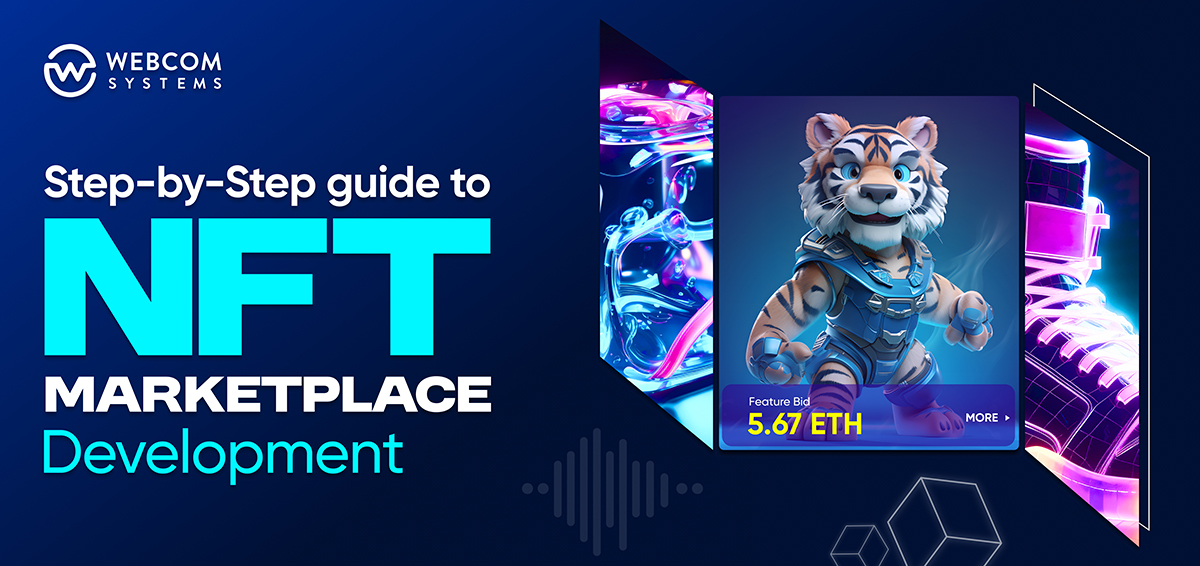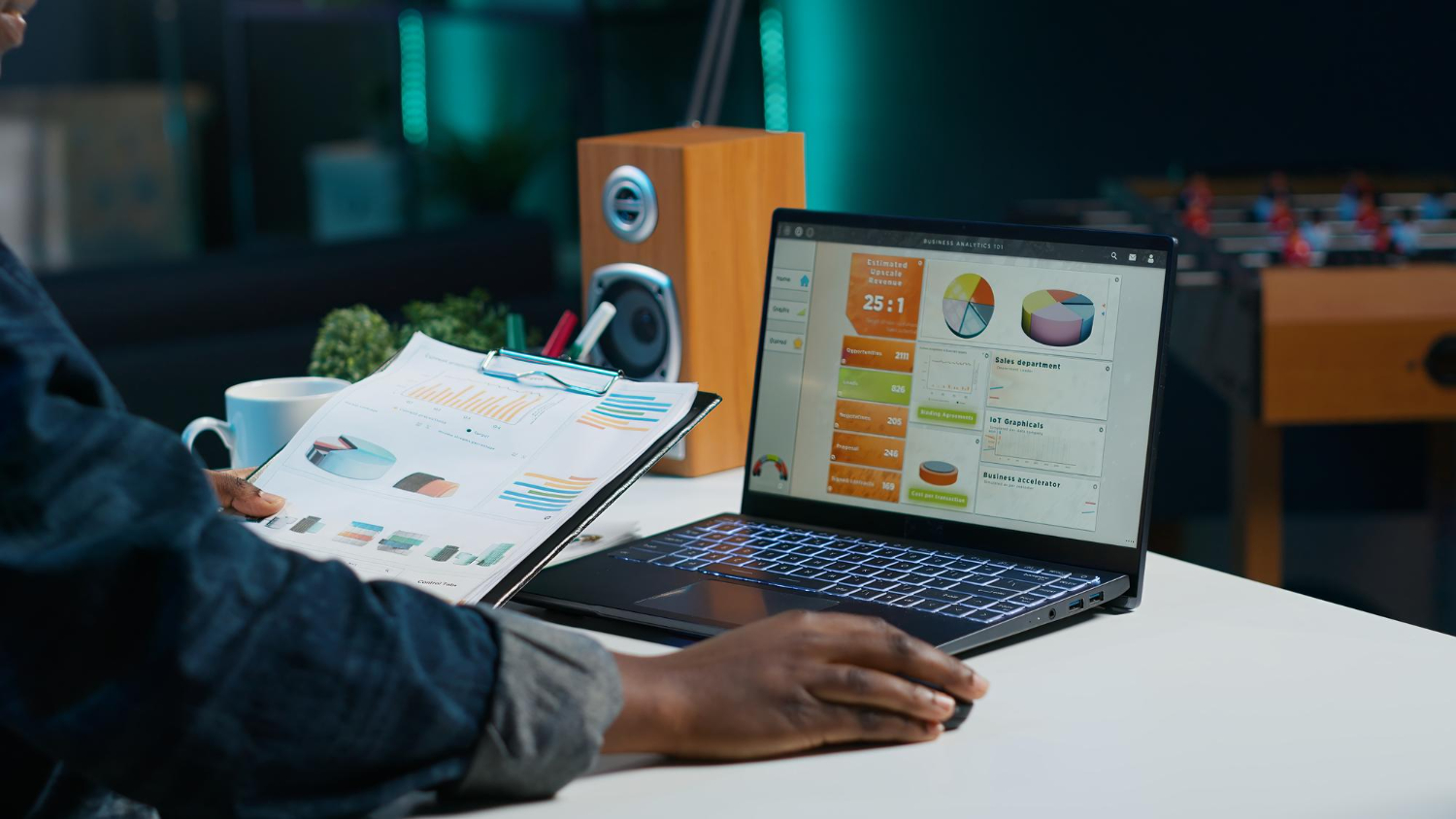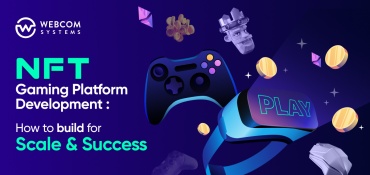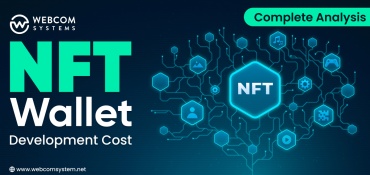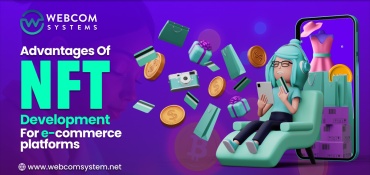Blockchain technology, which was thought to be just a fleeting trend by many during its inception, has continued to grow and solidify its prime position in the global digital ecosystem. Similarly, NFTs, one of the applications of blockchain, were initially overlooked but have greatly transformed industries such as art, music, real estate, gaming, and others.
NFT-based digital assets are being widely employed for secure ownership verification and digital commerce. Its widespread adoption has eventually made the NFT marketplace one of the most lucrative investments for businesses. If you are looking to capitalize on this business model and build an NFT marketplace for your business, you should be aware of its features and the right development practices, as well as the intricacies involved. Read this NFT marketplace development guide till the end to learn everything you need to know!
What is an NFT Marketplace?
An NFT (Non-Fungible Token) marketplace is a digital platform that is employed to mint, buy, sell, and trade NFTs. These NFTs are digital assets that are unique in nature and stored on a blockchain network. They represent ownership of items such as art, collectables, music, etc. Some of the popular NFT marketplaces include OpenSea, Rarible, SuperRare, Magic Eden, and Nifty Gateway.
Here are some of the most essential features of an NFT marketplace:
- Storefront: As the term suggests, the storefront is just like a store displaying the complete information of the NFTs, including their bids, owners, price histories, etc.
- Listing: Sellers can add their NFTs in the listing option to display them for the customers and track the purchase progress
- Token Search: To ease the search, the token search feature allows quick searching of desired NFTs from the platform’s list of NFTs.
- Reviews And Ranking: Review and ranking features cite the experience of past customers and allow future customers to compare and pick the ideal NFTs.
- Account Management: Sellers and buyers can be provided with separate spaces, creating different lists for buyer and seller profiles.
- Wallet: The Wallet option enables platform users to store, receive, and manage non-fungible tokens.
How Does an NFT Marketplace Work?
An NFT marketplace is somewhat similar to a physical market store in which platform users can store, buy, and sell NFTs. This is how basically any NFT marketplace platform operates:
- User Profiles: The platform has two separate profiles for sellers and buyers, each with its own dashboard.
The seller profile features functionalities like minting and listing NFTs.
The buyer profile, on the other hand, allows users to browse, review, bid on, and purchase NFTs.
- Integrated NFT Wallets: In order to manage their NFTs, both buyers and sellers can use integrated NFT wallets.
- Creating NFTs: A platform user can create NFTs of artworks or some other digital goods and mention their metadata details.
- NFT Storage: Once minted, the NFTs are stored securely on the blockchain network.
- Selling NFTs: Sellers can sell their NFTs by putting them up for auction sale or just listing them to sell at the desired price.
- Buying NFTs: Buyers can explore the available NFTs and purchase them either through bidding or by paying the listed price.
- Smart Contracts: The exchange of NFTs is automated using smart contracts that securely transfer the ownership rights to the buyer.
- Reselling NFTs: Once buyers acquire the ownership rights of NFTs, they can put them up for sale in the secondary market and receive royalties.
It is critical to understand that smart contracts manage the marketplace’s entire operational flow, such as minting, transferring ownership, handling royalties, etc. Furthermore, the platform transactions are recorded on the blockchain network so that the process remains immutable, transparent, and secure.
Complete NFT Marketplace Development Process
Most NFT marketplace development companies follow a step-by-step process that includes planning, design, testing, development, and everything in between. Here is the complete development roadmap mentioned below:
Project planning
When starting work on the NFT marketplace development project, instead of directly jumping into the development, you need to go over the following:
- Find the niche of your marketplace. Is it related to gaming, art, music, real estate, or something else?
- Look for NFT marketplace projects that are successful in your niche. Comprehend their approach, strengths, and areas where they are lacking.
- List down all the legal and regulatory requirements that your marketplace needs to adhere to.
- Find your target audience and their possible expectations from your project.
Assign the Platform Features
Once you’ve decided on the niche, selecting the platform features isn’t much of a hassle. There are a lot of features that can be added; just make sure your platform has essential features like an integrated wallet, a storefront, auction and fixed-price listings, a payment gateway, and smart contracts.
Pick a Tech stack for NFT Marketplace development.
Developing an NFT marketplace requires a certain set of tools and technologies. Here’s the tech stack you can choose for your project:
- Choose from a variety of blockchain platforms available in the market, including Ethereum, Binance Smart Chain (BSC), Polygon, Tezos, or Flow.
- Select the ERC-721, ERC-998, ERC-6551, or ERC-1155 smart contract standards according to the type of NFT support required.
- Any custom wallet, including MetaMask, Coinbase Wallet, and Trust Wallet, can be integrated with the platform.
- Depending on the project hosting needs, the marketplace can be hosted on AWS, Azure, or Google Cloud.
- The NFT marketplace’s frontend can be developed using web development tools like Angular, Vue.js, or React.
- Likewise, Node.js, Java, Python, Rust, GO, Ruby, and other programming languages can be used as backend frameworks.
- Select the right database based on your needs for data storage, whether it’s SQL or NoSQL.
Define UI/UX Design
Once you have all the necessities that are required for NFT marketplace development, it is time to create an impressive UI/UX design for the platform. This design doesn’t have to be visually attractive, but highly functional as well. Both these factors collectively aid in improving the experience for the platform users.
Front-End Marketplace Development
After the functionality and design are established, the marketplace’s front-end development can be started. It would entail actually building the platform’s framework using the chosen technology stack. This is one of the most important steps in development because it creates the platform’s entire architecture and requires the expertise of a skilled development team.
Smart Contract Development
Smart contracts manage the major operations of the NFT marketplace, including buying, minting, listing, and selling NFTs. Developers can code the smart contracts, mentioning the execution terms of these agreements, which automate operations upon meeting these terms.
Digital Wallet Integration
Your NFT marketplace platform users would need a digital wallet to store, sell, buy, and manage NFTs. That’s why, just before testing, a third-party digital wallet is incorporated into the platform to ensure secure and encrypted transactions.
Recommended Read: NFT Wallet Development Cost: Complete Analysis
Quality Assurance
Although the NFT marketplace framework is completely developed at this point, instead of directly launching, it is tested for any vulnerabilities and glitches. The platform is passed through multiple testing protocols, such as load testing, functional testing, security testing, etc.
Beta Testing
After this, the NFT Marketplace is beta-tested with only a limited number of users to check the functionality and gather areas of improvement. Following that, final touch-ups are given, and the platform is refined even further for the ultimate launch.
NFT Marketplace Launch
Finally, the marketplace is launched for public use. Once the solution is deployed, it is monitored at all times to spot and fix issues or provide regular updates.
Takeaway
NFTs are changing the way digital assets are owned, sold, purchased, and traded, and the NFT marketplaces play a crucial role in facilitating these exchanges through secure and seamless platforms. While building a platform from scratch with an in-house team is an option, it often demands significant time and resources. Instead, you can contact an NFT marketplace development company like Webcom Systems. We have a team of developers and blockchain experts who can craft custom NFT marketplace solutions tailored to your project demands and budget. Get in touch to learn more!
Recommended Read: Advantages Of NFT Development For eCommerce Platforms

